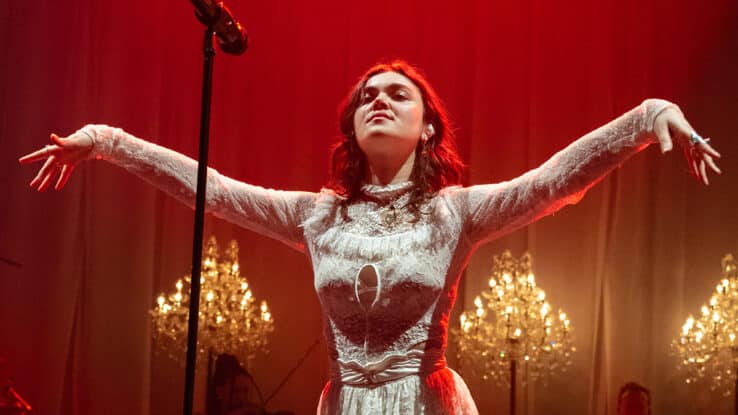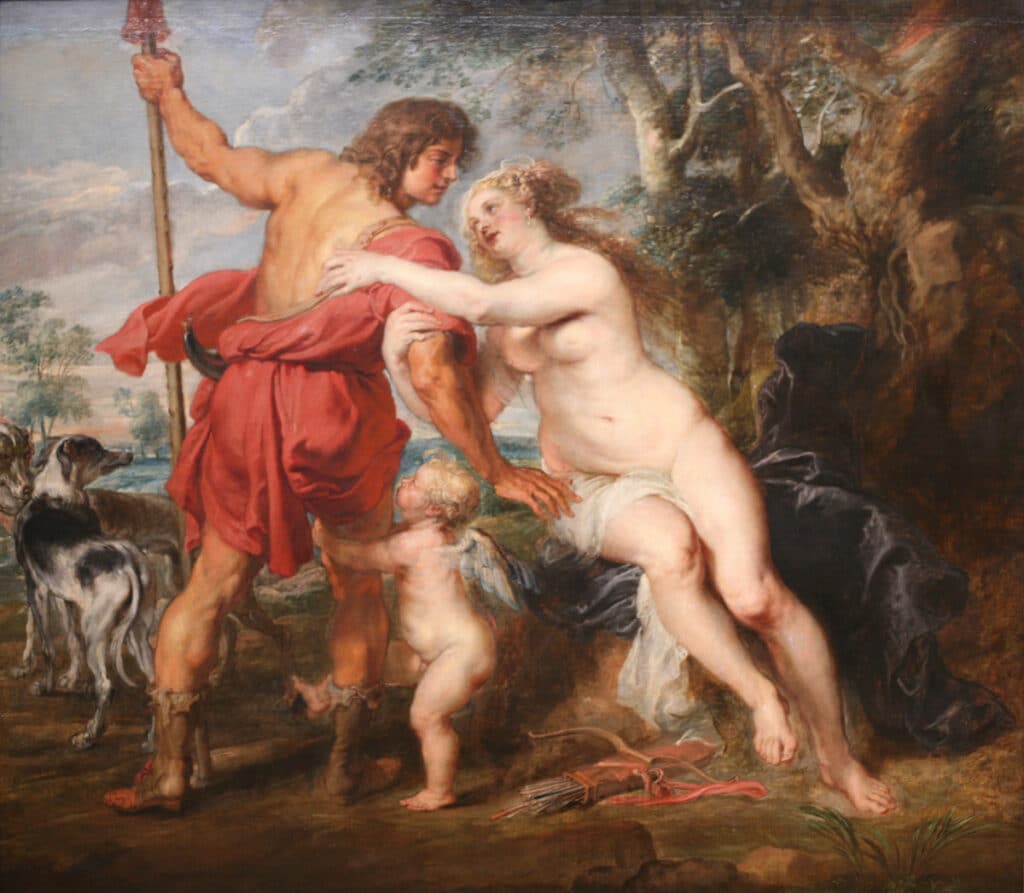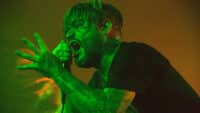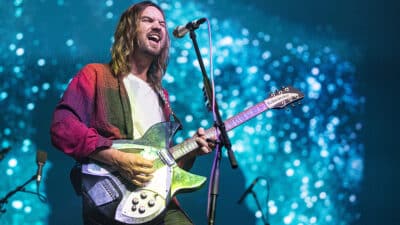Music

WTF is...
WTF is… baroque pop?
With The Last Dinner Party putting candelabras back in fashion, here's your all-frills guide to the most stylish sub genre around
In the four years since The Last Dinner Party formed, they built a massive online following and generated the kind of hype that forms queues. Their breakout single ‘Nothing Matters’ has now been listened to a staggering 41 million times on Spotify. And when Prelude To Ecstasy finally arrived in February this year, it outsold Taylor Swift for the No.1 spot on the Official UK Chart.
So what’s the secret? The Last Dinner Party conjured up a world of melodrama and self-destructive decadence; a theatrical combination that would be at home in an Emerald Fennell picture. While holding onto a heart of naivety their sound is precocious in ambition. A mix of old and new, it’s a cocktail that signals the exciting return of a timeless sub-genre of pop music. Welcome back baroque pop.
The history of baroque pop

It can’t be ignored that the name comes with a fair few pretensions. You might be picturing a group of art school students in full Ophelia regalia armed with medieval instruments – and, to some extent, you’d be right.
If we’re getting historical, the term “baroque” first originated in France, used by jewel merchants to describe irregularly shaped pearls – an apt metaphor for the ornate but sometimes unpolished nature of the genre. Adopted into a 17th century cultural movement spanning art, architecture and classic music, it took a few hundred years before pop started borrowing the term. Just as prog widened the parameters and technical possibilities in the broader rock genre, think of baroque as pop music’s intellectual older sibling.
First established in the mid 1960s, artists wishing to shrug off bubblegum pop pursued a more grandiose and symphonic sound. Top 40 entrants began to feature more ambitious structures echoing classical compositions that infused classic rock with orchestral instrumentation. New time signatures, string sections, French horns and harpsichord solos became commonplace, bringing refined, classical textures to the mainstream.
So, can every pop song featuring classical instruments be defined as baroque pop? Of course not (if only things could be that simple). While the baroque pop sound is ever-evolving, one consistent defining staple lies in its penchant for dramatic intensity. This is overly inflected vocals and a flair for on-stage theatrics. Lyrics obsessed with regret and unrequited love. Melancholy and melodrama. Pre-Raphaelite stylings. And all in some very whimsical costuming – think frills, cravats and anything that might be a fire-hazard next to a candelabra.
The heyday of baroque pop
The origins of the baroque pop sound are a long way from humble. As with so much 1960s pop innovation, both The Beatles and their mortal frenemies The Rolling Stones had a hand in shepherding the genre along in the early days. The music press initially started using “baroque pop” as an easy shortcut to describe any song featuring a harpsichord. Famously, The Beatles 1965 hit ‘In My Life’ turned a whole generation on to the instrument.
Featuring on Rubber Soul, Lennon’s ballad to simpler Liverpudlain times is brought together neatly by a sweeping harpsichord bridge. Or so it would seem. Tasked with completing the record with a “baroque sounding” piano solo, producer George Martin had struggled to make his own Bach-inspired composition match the song’s timing. Eventually, he found a workaround by playing back the recording at double speed, an octave higher. This stroke of genius inadvertently created the solo sound, with which harpsichords became open season.
‘Ruby Tuesday’, one example in a string of baroque-infused Rolling Stones classics, stands out as another seminal example of the genre in its infancy. Here, it was all down to Brian Jones and an alto recorder counter melody that gave the song its baroque edge.
For many, though, it was The Zombies’ 1964 hit ‘She’s Not There’ that was the first clearest example of a UK baroque pop song. The track was a bold departure from the mainstream sound of the period with its sorrowful minor key narrative and electric piano part complete with a hysterical jazzy bridge.
The queen of baroque pop
The work of these 1960s trailblazers helped give momentum to pop’s newest tributary, but no artist before or since has given as much shape to the landscape of baroque pop as Kate Bush. From her 1978 debut, The Kick Inside, aged just 19, Bush seemed completely self-assured as an artist. Songs such as ‘Wuthering Heights’ showcased her refined palate of baroque fundamentals. Her haunting melodies, bold orchestration and otherworldly singing (complete with potent four-octave vocal range) brought sophistication to the genre, and brought baroque pop right into the synthesizer age.
Just as importantly though, Bush also brought in the art of live performance. Theatrical and avant-garde, she introduced an ethereal sprite-like quality to her own stage that quickly became synonymous with the genre. Balletic in movement, her rich performing style provided the perfect dramatic accompaniment to her music, arguably elevating the importance of dramatisation as a storytelling medium.
The wake of Bush’s influence on the genre is still being felt. When she took an unexpected 35-year hiatus from the stage following the end of her 1979 tour, she left behind a clear, more refined archetype of what it meant to be a baroque pop artist.
The baroque pop renaissance
While bands such as Vampire Weekend, Beirut, Wild Beasts, Fun, The Last Shadow Puppets, Regina Spektor and Arcade Fire all took the genre in new directions, the 00s re-emergence of baroque pop only had one new figurehead. Enter Florence + The Machine.
Headed by Florence Welch, the group arrived fully formed with the debut record, Lungs. Its rich sound, orchestral texture, explosive vulnerability and percussive heartbeat built upon the legacy of its predecessors and gave baroque pop a whole new lease of life in the mainstream.
Dramatic performances stunned audiences and demonstrated Welch’s unique way with a big vocal and a bigger harp. While far from derivative, the influence of Kate Bush was evident in the group’s symphonic compositions, introspective lyrics and intense vocal delivery. In live performances too, Welch clearly drew a lot of aesthetic and creative choices from her hero – ornate outfits flowing with her expressive and balletic movements; an onstage persona that radiated the fragile glamour of a tragic heroine. Songs were telling stories on stage again, and Florence + The Machine were breathing life back into the genre.
As if handing over the (flower) crown, it was fitting that Florence Welch presented The Last Dinner Party with the BBC Sound of 2024 award, but they won’t be the last to wear it. Now spearheading a new renaissance of other artists taking the same inspirations, The Last Dinner Party join up-and-comers The New Eves, FIZZ, Prima Queen and Paris Paloma alongside established artists still skirting the frilly fringes of the genre like Sufjan Stevens, Melody’s Echo Chamber and Lord Huron. Baroque ‘n’ roll is here to stay.
Photo credit: Samir Hussein/WireImage









